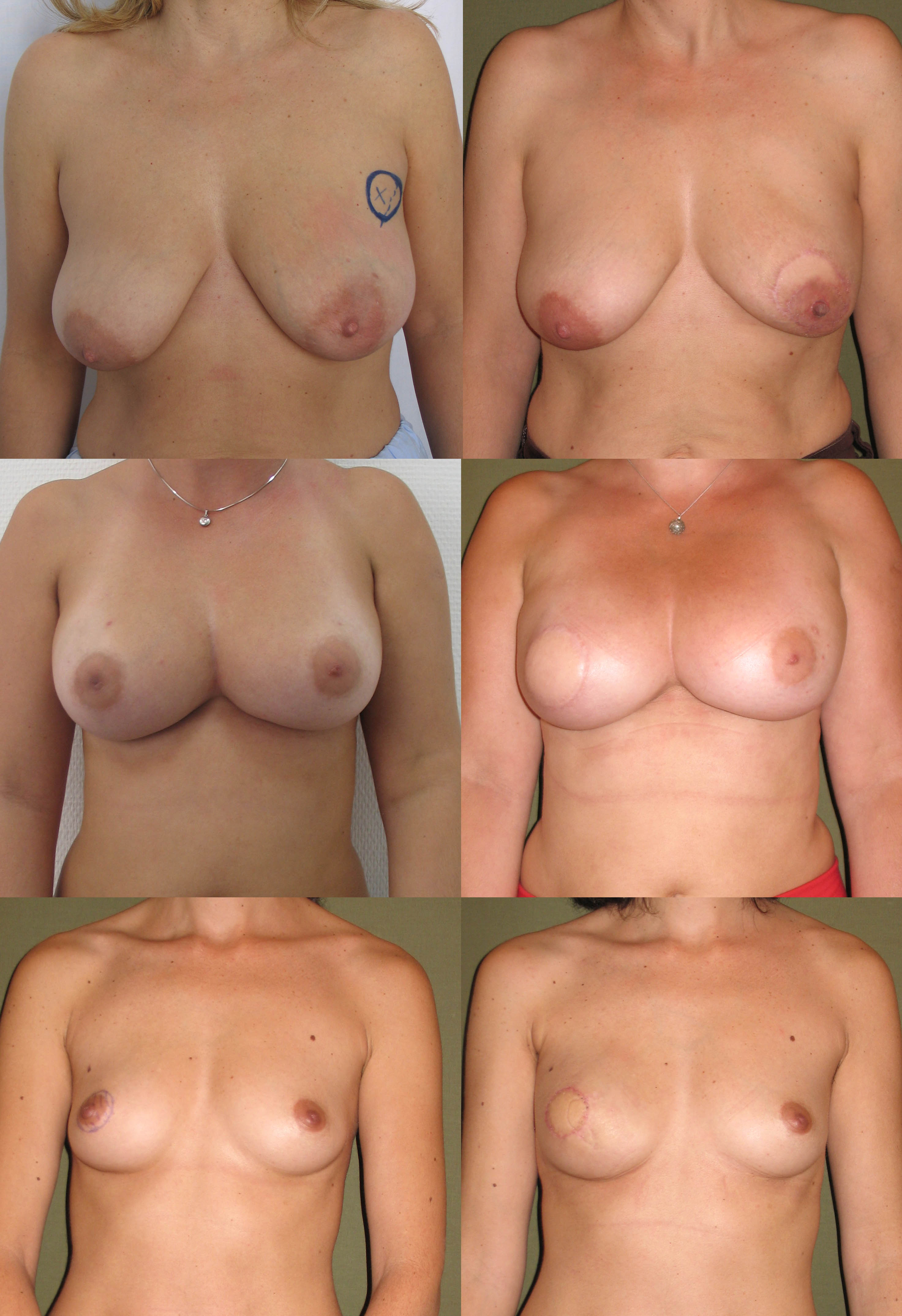Wednesday, November 5, 2008
14413
Immediate Breast Reconstruction After Skin-Sparing Mastectomy with the Latissimus Dorsi Flap and Low Profile Round Breast Implants. Evaluation of Results in 164 Consecutive Cases
Introduction: Skin-sparing mastectomy (SSM) has become an established procedure in breast surgery with similar oncological outcome and higher aesthetic results when compared with conventional mastectomies, especially when combined with immediate autologous reconstruction. The latissimus dorsi myocutaneous flap in combination with prosthesis is a well-established procedure, mainly indicated in patients in whom the use of abdominal flaps is precluded. However, a variety of techniques has been proposed regarding latissimus dorsi management (fixation of muscle, denervation, transection of humeral insertion), implant positioning (subpectotal or not), and type of implant (anatomical or round, expander or final implant).
Methods: We performed a retrospective review on 164 consecutive immediate breast reconstructions after SSM with a latissimus dorsi flap combined with a low profile round silicone gel breast implant. In all cases, the muscle was transected from its humeral insertion and was not denervated or fixed in any form to the chest wall. The pectoral muscle was left untouched. This technique was indicated only in patients in whom the use of abdominal flaps was contraindicated. Flap and donor-site complications and oncologic status were evaluated. Information on aesthetic results and patient satisfaction was collected.
Results: Mean follow-up was 39 months. No local recurrences were observed. The cosmetic result was considered good or very good in 91 percent, and the majority of patients were either very satisfied or satisfied. Complications occurred in 25 patients, consisting of dorsal seroma (4.2% patients), post-operative hematoma (1.2% patients), skin necrosis of the SSM (3.6% patients), capsular contracture of the implant (6% patients), and dorsal pain (1.8% patients). All complications except 4 were treated by conservative means. There were no flap related complications. One-third of the patients referred tenderness at the axilla and involuntary movements of the transferred muscle, but none requested surgical revision. There were no complaints regarding loss of shoulder force and function.
Conclusions: The latissimus dorsi myocutaneous flap combined with a low profile implant is a consistent technique for breast reconstruction following SSM. On the basis of our observations, pectoralis muscle does not need to be elevated to obtain a complete muscular coverage of the implant, thus reducing operative time and morbidity. We recommend keeping the latissimus dorsi muscle innervated to maintain trophicity and prevent volume reduction and contraction of the flap. Transection of the humeral insertion avoids bulging in the axilla. Fixation of the muscle to the chest wall is not needed and may produce deformities if incorrectly placed.
Breast implants in this type of reconstruction must be capable of completely filling the wide base of the mastectomy, while projection is achieved with the autologous component of the reconstruction. Breast shape is restored with the skin paddle of the flap after SSM. Thus, low profile round implants are preferred (Fig. 1).

Fig. 1. Immediate breast reconstruction after skin-sparing mastectomy with the latissimus dorsi flap and low profile round breast implants.
See more of Breast (Cosmetic and Reconstructive)
Back to 2008am Complete Scientific Program
